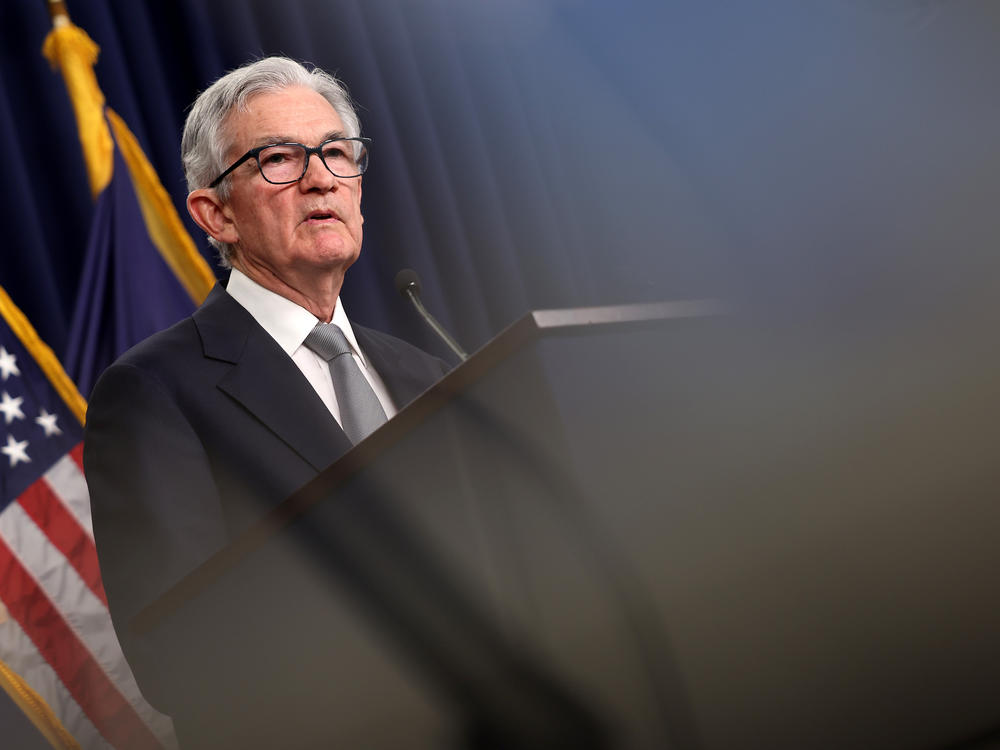Section Branding
Header Content
The Fed is probably done raising interest rates and could cut them next year
Primary Content
Updated December 13, 2023 at 6:29 PM ET
The Federal Reserve signaled it's probably done raising interest rates to curb inflation and the central bank could start cutting rates next year.
Inflation has moderated recently, giving more comfort to policymakers. Annual inflation fell to 3.1% in November, thanks in part to a steep drop in gasoline prices, the Labor Department said Tuesday. Overall prices are climbing less than half as fast as they were at the beginning of the year.
"We're seeing inflation making real progress," Fed chairman Jerome Powell told reporters Wednesday. "These are the things we've been wanting to see."
He added that while policymakers don't anticipate additional rate hikes, they're not ruling them out.
"We still have a ways to go," Powell said. "No one is declaring victory. That would be premature."
The Fed's rate-setting committee left interest rates unchanged on Wednesday. Forecasts released by Fed policymakers show that, on average, they think they'll be able to lower their benchmark rate by three-quarters-of-a-percentage point by the end of next year, and another full point in 2025.
Investors cheered the news, since falling interest rates typically lead to rising stock prices. The Dow Jones Industrial Average soared more than 512 points Wednesday and closed at a record high above 37,000.
The economy has done better than expected
The Fed has kept its benchmark interest rate at a 22-year high between 5.25 and 5.5% since July. Higher interest rates make it more expensive to buy a car, expand a business, or carry a balance on your credit card. The high rates are intended to tamp down demand and bring prices under control.
So far, the economy has weathered higher interest rates in far better shape than many forecasters expected.
The unemployment rate has been under 4% for 22 months in a row. The economy added more than 2.5 million jobs in the first 11 months of the year.
Fed policymakers expect somewhat slower growth and higher unemployment in 2024, but their outlook does not include a recession.
"This is what a soft landing looks like, and this is what full employment feels like," said Joe Brusuelas, US chief economist for RSM. "That's why we're optimistic about the direction of the economy, heading into 2024."
The timing of any rate cuts during an election year could be politically sensitive, however.
When he was in the White House, Donald Trump frequently urged the Fed to cut rates to boost the economy. Former President George H.W. Bush blamed elevated interest rates in 1992 for costing him his reelection.
Powell, who jealously guards the central bank's independence, insists politics won't factor into the Fed's decision-making.
"We don't think about politics," Powell said. "We'll do the things that we think are right for the economy at the time when we think is the right time"
Copyright 2023 NPR. To see more, visit https://www.npr.org.


